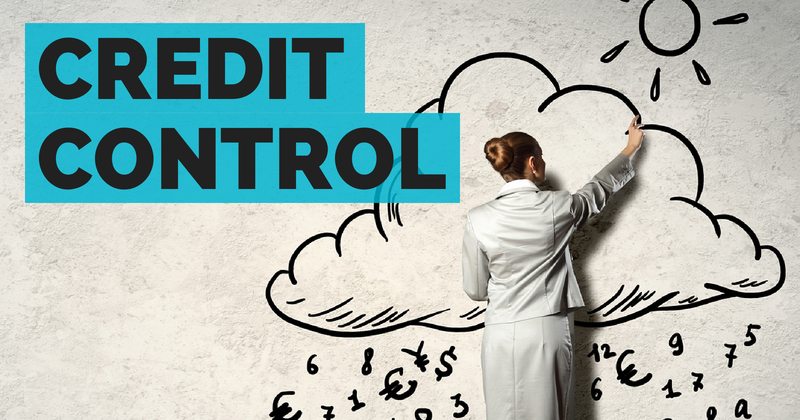Introduction:
Credit control is essential to business management, especially for companies that offer products or services on credit terms. It involves monitoring and managing the amount of credit extended to customers and ensuring that payments are collected within the agreed time frame.
Effective credit control helps Credit control businesses maintain a healthy cash flow, minimize the risk of bad debts, and improve profitability. it is important for businesses to understand the steps involved in a strong credit control process and strategies for improving credit management.
What is credit control?
Credit control refers to the policies, procedures, and practices a business implements to ensure that customers who purchase goods or services on credit pay their invoices on time. This process involves assessing a customer’s creditworthiness, setting credit limits, managing receivables, and following up on overdue payments.
The main objective of credit control is to reduce the risk of non-payment while ensuring that the business’s cash flow remains steady. It also allows businesses to establish good relationships with customers by offering reasonable credit terms while safeguarding their financial position.
Why is credit control important?
Credit control is a critical function for any business that sells on credit. Here are some of the reasons why it is important:
1. Maintains Cash Flow:
For many businesses, cash flow is the lifeblood of daily operations. Even profitable businesses can face financial difficulties if they do not have enough cash to cover expenses like payroll, rent, and supplier payments. Effective credit control ensures that payments are collected on time, helping to maintain a positive cash flow and avoid cash shortages.
2. Reduces the Risk of Bad Debts:
When businesses extend credit to customers, there is always a risk that some customers may not pay their invoices, resulting in bad debts. Bad debts can have a significant impact on profitability and the financial health of a business. Credit control helps to minimize this risk by assessing customers’ creditworthiness before offering credit and actively managing receivables.
3. Improves Profitability:
Bad debts and delayed payments reduce the profitability of a business. Implementing an efficient credit control process reduces the likelihood of these losses, leading to higher profit margins. By collecting payments on time, businesses can reinvest in operations, expand, and grow.
4. Enhances Customer Relationships:
Credit control does not only benefit the business but also helps in building strong relationships with customers. By setting clear expectations regarding credit terms and payment timelines, businesses can avoid misunderstandings and disputes with customers, leading to long-lasting, positive relationships.
5. Minimizes Financial Risk:
Granting credit without adequate credit control increases the risk of financial instability. Companies with poor credit management are more likely to encounter liquidity problems, as delayed payments can cause delays in meeting their own financial obligations, leading to a cycle of debt.
Key Steps in the Credit Control Process
Effective credit control requires a structured process that starts before a sale is made and continues until payment is collected. Below are the key steps involved in credit control:
1. Assess Customer Creditworthiness:
Before extending credit to a customer, it is important to assess their creditworthiness. This assessment involves reviewing the customer’s financial history, credit score, and payment behavior with other suppliers. Businesses can use credit reports, references, or third-party credit agencies to gather this information. If the customer has a good track record, credit can be extended with confidence.
2. Set Clear Credit Terms:
Once a customer’s creditworthiness has been established, it is important to agree on the terms of credit. These terms should clearly define the credit limit, payment due date, interest on overdue accounts, and penalties for late payment. Clear credit terms help to prevent misunderstandings and ensure that both parties are aware of their obligations.
3. Monitor Accounts Receivable:
After extending credit, it is important to actively monitor the status of receivables. This involves keeping track of invoices, payment due dates, and outstanding balances. Regularly reviewing aged receivables reports allows the credit control team to identify overdue accounts and take action before the debt becomes unmanageable.
4. Send Payment Reminders:
As the payment due date approaches, it is a good practice to send reminders to customers. A polite email or phone call can serve as a gentle nudge to ensure that customers are aware of their outstanding payments. This can help prevent late payments without damaging the customer relationship.
5. Take Action on Late Payments:
If a customer fails to pay on time, the credit control team must take steps to recover the payment. This may include sending formal letters, imposing late payment fees, or offering revised payment plans to customers facing financial difficulties. In extreme cases, businesses may need to consider legal action or involve debt collection agencies.
6. Review and Adjust Credit Limits:
A customer’s credit limit should not be static. It is important to periodically review and adjust credit limits based on the customer’s payment history, changing financial circumstances, and overall business relationship. Reducing credit limits for customers who consistently pay late can help protect the business from further losses.
Strategies to Improve Credit Control
Effective credit control can significantly reduce the risk of non-payment and improve cash flow. Here are some strategies to improve your credit control process:
1. Automate Invoicing and Payment Tracking:
Using accounting software to automate invoicing and payment tracking can streamline the credit control process. Automated reminders, real-time reporting, and integration with payment systems can make it easier to manage receivables and follow up on overdue accounts.
2. Offer Incentives for Early Payment:
To encourage customers to pay earlier than the agreed terms, businesses can offer incentives such as small discounts for early payment. This not only improves cash flow but also builds goodwill with customers who appreciate the incentive.
3. Implement a Credit Control Policy:
Having a formal credit control policy helps ensure consistency in the way credit is granted and managed. A well-documented policy should outline the procedures for credit assessment, setting credit terms, monitoring receivables, and handling late payments.
4. Build Strong Relationships with Customers:
Good customer relationships can contribute to better payment behavior. When businesses maintain open and positive communication with customers, they are more likely to pay on time. Regular contact helps businesses stay informed about any issues that may affect a customer’s ability to pay.
5. Review Credit Risk Regularly:
The financial situation of customers can change over time, so it is important to review their credit risk regularly. This can involve re-assessing their creditworthiness, adjusting credit limits, and updating terms based on new financial information.
6. Use Third-Party Collection Services:
For accounts that remain unpaid despite repeated efforts, businesses may choose to outsource debt collection to third-party agencies. These agencies specialize in recovering overdue payments and can be particularly useful in recovering older or larger debts.
Conclusion
Credit control is a critical aspect of managing a business’s finances. By extending credit cautiously, setting clear credit terms, and closely monitoring receivables, businesses can reduce the risk of bad debts and maintain a healthy cash flow.



